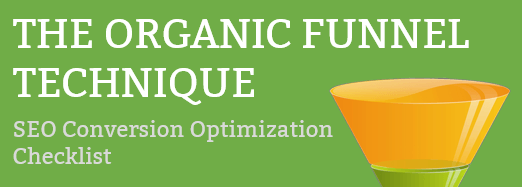
Many businesses use email to communicate with customers. It can be incredibly effective if used correctly. According to experts, every dollar you invest in your email marketing, you’ll make $38 back. That sounds great, of course, because it means one email could make you hundreds, if not thousands, of dollars.
This is why it’s very important to make certain that you don’t accidentally ruin your domain sender score. This score isn’t something many people know about, but everyone who sends emails to customers is affected by it. If your score is too low, your email is likely to be considered spam. That means it may never make it to your customers.
In addition to the sender score, you need to understand the difference between deliverability and deliver as discussed by Mailtrap to help get into your subscribers mailbox.
Let’s take a look at what this score is and why it’s so important that you have the right data driving your email campaign open rates and deliverability.
Sender Scores Explained
Your domain’s sender score is basically a numerical representation of the reputation you’ve earned from the emails you’ve sent. If you send a lot of spammy messages, your score is going to be pretty low. If you send well-written emails that are targeted at segments in your subscriber audience, your score is likely to be pretty good. That’s what you want—the higher your sender score is, the more mailbox providers such as Microsoft, Gmail, and Yahoo will trust your emails. This means fewer of them will end up in spam folders or on blacklists.
There are several companies out there that assess domains and score them based on emails sent from that domain. Return Path’s Sender Score, WatchGuard’s Reputation Authority, Barracuda Networks, and Cisco’s Senderbase all do this, with the first two providing a numerical score and the last two rating pages as good, bad, or neutral.
What Affects Your Domain Sender Score?
Your sender score is affected by a number of different factors. Since each of the four reputation scorers has different criteria, some of these factors may be weighed more heavily than others. It varies from scorer to scorer.
- Complaints. Emails that are sent to the spam folder or forwarded to a blacklist
- Blacklists. Is your email address or domain already on one of the numerous blacklists?
- Sending to unknown users. Many of your emails go to email addresses that are no longer valid or to spam traps
- Consistent volume. Are your emails sent to lists that are consistently the same size?
- Frequency. Do you send emails regularly or sporadically?
- Engagement. How often are your emails opened or replied to?
All of these factors will affect your score, which is why you need to carefully make certain that you’re sending emails to the right people. If you don’t, it’s likely that your sender score will suffer because of at least one of these points. Let’s look at each in terms of demographic data.
Using Demographic Data to Boost Your Sender Score
It’s important to note that your sender score is not the cause of a poor or underwhelming email marketing campaign. Instead, it’s a symptom of using poor demographic data. By learning more about your audience and the importance of good demographic data, you’ll be able to better segment your customers. This means you can deliver very targeted emails. This, in turn, will improve your score.
- Complaints. If you’re sending email to people who want it or are interested in what you’re offering, you’ll get fewer complaints or emails sent to spam.
- Blacklists. By carefully targeting who you’re emailing by segmenting your list based on what you know about your subscribers, it’s less likely your domain will end up on a blacklist.
- Sending to unknown users. By keeping your email list up to date and removing any bounce back addresses after a certain period of time, you won’t have as many addresses flagged as unknown or as spam traps.
- Consistent volume. Keep your emails near the same size. Being consistent shows that your emails aren’t wildly varying in content.
- Frequency. Likewise, do your best to be consistent in how often you send emails. Increasing or decreasing frequency now and then won’t hurt, but varying wildly will.
- Engagement. By sending emails to a specific segments based on their demographic, they’re more likely to be opened, thereby increasing open rates and click rates.
If you end up with a low score, it’s a indicator that you’re not trying to reach the right audience. You need to take a good look at your email list, what you know about your list and determine what’s wrong with how you reach them. Are you looking at the right age group? Location? Gender or possibly even income? Somewhere, something is causing most of the people who get your email to ignore it or mark it as spam. Using subscriber data can significant impact the problem that you must correct.
Fortunately, sender scores are often recalculated. If you do see that your score is dropping, you can fix it by looking at your demographic data and changing up what you see as a problem by improving your email segmentation. Of course, even if your score is fairly high, you can always work to improve it by making tweaks to your segments based on data.
Keeping Your Score High
While you can come back from a drop, it’s always better to never experience such a drop in the first place. To do that, you need to look at two factors: your score’s quality and list hygiene.
The quality of your email list simply means collecting the correct addresses with the best demographic data you can get for segmentation. If you get a wrong email or the email of someone who isn’t interested in what you offer, that’s a low-quality address for your purposes.
List hygiene, on the other hand, means that you
- regularly check your data
- remove anyone you no longer believe is a desired recipient
- enhance the data you do have to improve campaigns with better segmentation
Quality Email Addresses and Demographic Data Increase Open Rates
Let’s look at collecting high quality addresses. Sometimes people do put fake emails into online forms because they simply want access to certain content. They have no intention of signing up for your mailing list. This is why it’s important to use some kind of verification process. Send an email that the user must reply to or click a link in. This will help avoid these fake emails.
You also need a system for removing old emails that are no longer active. If you see a high number of undeliverable alerts, consider removing all of those addresses from your database in order to avoid the sender score hit.
Avoid bad email collection habits, too. This includes using a bot to scrape emails from a website. These emails often include a spam trap email for those who use these scraper tools. It’s not visible to people on the website, but a bot will capture it and assume it’s a real address. You also want to avoid guessing at emails. Some email providers try to sell lists that include emails they believe may be valid. This includes going through a company directory and creating emails listing the first and last name of each employee. Sometimes, these emails are actually correct, but more often than not, they’re invalid.
Here is a very common example seen from our own account in Mailchimp of doing segmented email campaigns. Notice the open rate is far higher when we target specific portions of our list than simply emailing everyone.
 Better Hygiene
Better Hygiene
When you look through your demographic data, you may immediately see some emails that aren’t good. Anything that doesn’t go to a specific person is likely a useless email. This includes emails that start with “support” or “test.”
Remove or correct emails with an obvious typo – gmial.com or gmail.cmo, for example.
Use a bounce management program to monitor for bounced emails and remove any that are repeat offenders.
By continually improving the data you use to enhance your email addresses, the way you collect emails, targeting the demographics you’re going to market to, and then keeping that targeted email list updated and clean, you’ll improve and maintain a high email sender score. Doing so will drive up those open rates, your domain sender score and ultimately, your sales.

 Better Hygiene
Better Hygiene